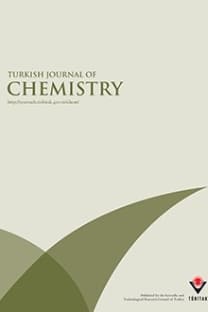Investigation of the structural and physicochemical requirements of quinoline-arylamidine hybrids for the growth inhibition of K562 and Raji leukemia cells
Structure-activity, molecular docking, hybrid anticancer drugs, leukemia,
- ISSN: 1300-0527
- Yayın Aralığı: 6
- Yayıncı: TÜBİTAK
Masoumeh FARIMANEH, Giuseppe BRUNO, Anahid SANEEI, Mostafa GHOLIZADEH, Mohammad Reza HOUSAINDOKHT, Mehrdad POURAYOUBI, Hadi AMIRI RUDBARI
Rafal SLUSARZ, Justyna SAMASZKO FIERTEK, Janusz MADAJ, Lucyna PELLOWSKA JANUSZEK, Barbara DMOCHOWSKA, Roland WAKIEC
Asiye NAS, Ümit DEMİRBAŞ, Nurhan GÜMRÜKÇÜOĞLU, Halit KANTEKİN
Hassan SHEHATA, Hanan YOUSSEF, Fabienne PONCIN EPAILLARD, Ahmed ELZAREF, Dominique DEBARNOT, Jörg FRIEDRICH, Magdy WASSEL, Alaa FAHMY
Vesna RASTIJA, Marijana JUKIC, Teuta OPACAK-BERNARDI, Luka KRSTULOVIC, İvana STOLIC, Ljubica GLAVAC-OBROVAC, Miroslav BAJIC
Gökhan AÇIK, Musa KAMACI, Burak ÖZATA, Cahide Elif Özen CANSOY
Halit KANTEKİN, Ümit DEMİRBAŞ, Asiye NAS, Nurhan GÜMRÜKÇÜOĞLU
